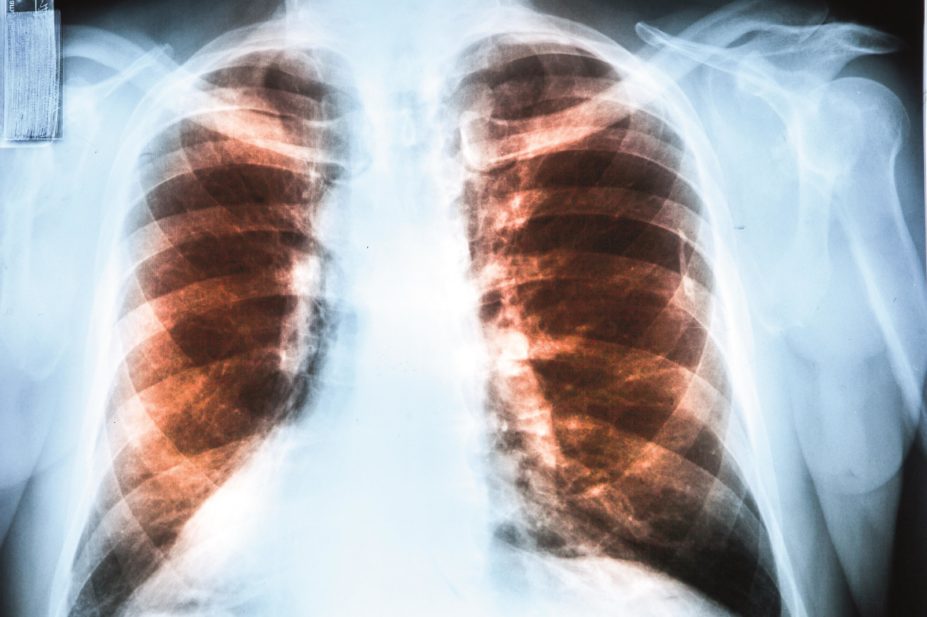
Shutterstock.com
Lung cancer patients who have used statins in the year leading up to, or after, a lung cancer diagnosis have a lower risk of death from the disease, according to research based on English cancer registry data.
Possible links between statins and lung cancer have been glimpsed in preclinical studies. In vitro studies have shown reduced proliferation, reduced migration and increased apoptosis in lung cancer cell lines exposed to simvastatin. A mouse model of the disease demonstrated reduced tumour growth and bone metastases after simvastatin treatment.
The recent retrospective study, led by Chris Cardwell, senior lecturer in medical statistics at the Centre for Public Health at Queen’s University Belfast in Northern Ireland, revealed “the magnitude of the association was relatively small”. Among all patients in the study, those who used statins in the year before a diagnosis had a 12% reduction in lung cancer-specific deaths (adjusted hazard ratio [HR] 0.88, 95% confidence interval [CI] 0.83–0.93; P<0.001). There was no difference in outcome between non-small cell lung cancer patients and small cell lung cancer patients.
There have been very few human studies on possible links between lung cancer mortality and statin use, says Cardwell. Researchers have only looked at patients who took statins before a lung-cancer diagnosis, and have investigated pravastatin rather than simvastatin, for which the promising preclinical evidence exists.
Cardwell’s team used data from nearly 14,000 patients newly diagnosed with lung cancer between 1998 and 2009. They analysed the patients’ prescription records from the UK Clinical Practice Research Datalink and mortality data up to 2012 from the Office of National Statistics.
This data was used to look at the effect of taking statins after lung cancer diagnosis. The association was more marked among patients who collected at least 12 prescriptions for statins and those who used lipophilic statins, such as simvastatin; both had a 19% reduction in lung cancer-specific deaths (adjusted HR 0.81, 95% CI 0.67–0.98; P=0.03, and adjusted HR 0.81, 95% CI 0.70–0.94; P=0.01, respectively). The study is published in the journal Cancer Epidemiology, Biomarkers & Prevention
[1]
.
Cardwell says that, as with all observational studies, there are possible confounding factors. Were the simvastatin users in his study different from simvastatin nonusers in other ways that could have protected them from death from cancer?
“Our study provides some evidence that patients who used statins had a reduction in the risk of death from lung cancer,” says Cardwell. “If replicated in further observational studies, this would provide evidence in favour of conducting a randomised, controlled trial of simvastatin in lung cancer patients.”
Cardwell’s team plans to conduct a similar analysis in a large cohort of lung cancer patients from Northern Ireland.
Cancer Research UK urged caution. “This study shows a relatively weak link between lung cancer survival and statin use, and certainly doesn’t provide evidence to suggest that people should start taking these drugs to treat or prevent cancer,” says Kat Arney, Cancer Research UK’s science communications manager.
“More clinical trials are needed to show whether statins are beneficial for treating or preventing any kind of cancer.”


